Fresh Supps founder and CEO Greg Helton has an impressive resume, even by the standards of the most seasoned supplement veteran. With a decade of industry experience under his belt, including 7 years as chief marketing officer of Musclesport and 1 year as VP of Ryse, not to mention an ISSA personal training certification, Greg was perfectly positioned to start his own premium supplement brand, and the results have been amazing.
Fresh Supps Pre-Workout
Earlier this year, the Fresh team released the Fresh Supps Pre-Workout formula, a strong and affordable formula that boasts 6 grams L-citrulline and a total of 360 milligrams caffeine from two caffeine sources. This is a milestone for any new supplement company – a pre-workout is the traditional initial offering and plays a big role in establishing a company's reputation.
Well, we're pleased to report that Fresh put together a great product. Let's get into the details, but first, check the PricePlow news and deals:
Fresh Supps Preworkout – Deals and Price Drop Alerts
Get Price Alerts
No spam, no scams.
Disclosure: PricePlow relies on pricing from stores with which we have a business relationship. We work hard to keep pricing current, but you may find a better offer.
Posts are sponsored in part by the retailers and/or brands listed on this page.
This area is reserved for Team PricePlow's upcoming videos.
Subscribe to our channel and sign up for notifications so you catch it when it goes live!
Ingredients
In a single 2-scoop (16 gram) serving of Fresh Pre, you get the following:
-
L-Citrulline – 6,000 mg
Citrulline is a conditionally essential amino acid known for its ability to enhance nitric oxide (NO) production.[1]
When we say "conditionally essential," we mean that your body's natural production of citrulline might be limited under specific pathophysiological conditions, such as illness, stress, or injury. These situations increase your citrulline requirements beyond the norm, making the amino acid essential. At these times, it's crucial to consume an adequate amount of the amino acid to bridge the gap between your body's demand and its production capacity.
In the conversion pathway from citrulline to NO, the process looks like this:
Citrulline → arginine → NO
As you can see, there's an intermediate step between citrulline ingestion and NO synthesis: the conversion of citrulline to arginine.
Given that arginine is the most direct precursor to NO, you might wonder why we wouldn't rather supplement with arginine directly. The reason is that arginine's oral bioavailability is relatively low. Citrulline, on the other hand, is better absorbed, leading to higher arginine levels in the bloodstream than could be achieved by ingesting arginine itself.[2,3] Then the elevated arginine level drives NO synthesis.
Having more NO in your blood can be beneficial for athletes, gym enthusiasts, or anyone looking to optimize their cardiovascular health. That's because NO induces vasodilation, a process where blood vessels expand, which increases blood flow. This leads to improved tissue perfusion and reduces the workload on the heart. Enhanced NO production can also result in lowered heart rate and, importantly, reduced blood pressure.[4-6]
The potential advantages of vasodilation include better tissue oxygenation, enhanced nutrient delivery, and more efficient removal of metabolic waste. All of these factors can contribute to improved gym performance and quicker post-exercise recovery.
Citrulline's participation in the nitric oxide cycle and the urea cycle. The enzyme argininosuccinate converts citrulline to arginine, and arginine stimulates the production of nitric oxide
In terms of athletic benefits, citrulline supplementation has been linked to:
- Enhanced power output by increasing oxygen utilization[7]
- Increased endurance by as much as 50%[8]
- Reduced post-workout muscle soreness[8]
- Stimulation of growth hormone (GH) secretion[9]
- Decreased protein breakdown[10]
- Augmented muscle protein synthesis[11,12]
Additionally, citrulline supplementation increases blood levels of ornithine,[13] an amino acid that eliminates ammonia from the body.[14] Ammonia, being a toxic metabolic byproduct of amino catabolism in muscle tissue during exercise, is a source of both mental and physical fatigue. Thus, reducing ammonia levels is one mechanism by which supplemental citrulline can increase endurance.
Ornithine also has a documented ability to enhance metabolic function and improve sleep quality while reducing feelings of stress. Its impact on lowering the cortisol-to-DHEA ratio appears to play a significant role in this process.[14]
-
Beta-Alanine – 3,200 mg
Beta-alanine is a long-standing staple in the realm of sports supplements, thanks to its low cost, excellent safety profile, and bona fides as an ergogenic aid – defined as any substance or technique amplifying athletic performance.
Beta alanine leads to more work done, which can lead to gains if you take advantage of them!
Its endurance boosting mechanism of action is binding to L-histidine, which forms a dipeptide molecule called carnosine. Carnosine is highly concentrated in muscle tissue, where it plays a pivotal role in eliminating lactic acid (or lactate), yet another pesky metabolic byproduct of exercise that can cause muscular fatigue as it accumulates.[15]
Beta-alanine supplementation reduces lactate accumulation in muscles, thus staving off anaerobic fatigue at moderate to high exercise intensities. This can translate into increased endurance during workouts.
Now, again, you might wonder why not directly supplement with carnosine? The answer lies in carnosine's poor oral bioavailability, which makes it ineffective when taken orally. Since beta-alanine's bioavailability is much higher, it actually increases carnosine levels more effectively than a carnosine supplement can.
Since beta-alanine (as opposed to histidine) availability is almost always the bottleneck on carnosine production,[4,5] increasing beta-alanine intake reliably boosts carnosine levels.
Two big meta-analyses, examining over 40 peer-reviewed papers, have concluded that showcasing beta-alanine is best at increasing endurance within a particular intensity range. That range is any effort that can be sustained between 30 seconds and 10 minutes.[16,17]
What about the tingles?
Most people, upon taking beta-alanine, experience an intense tingling sensation in their face and torso. If this happens to you, don't be alarmed – the 3,200-milligram dose of beta-alanine has been extensively researched, and found to be safe. Furthermore, a recent meta-analysis on beta-alanine safety backs up that long-standing consensus.[18]
-
Betaine Anhydrous (Trimethylglycine) – 2,000 mg
Betaine, also referred to as trimethylglycine (TMG), is another ergogenic aid, although acting through a mechanism that's very different from beta-alanine's.
A landmark 2013 study showed that 2.5 grams of betaine every day can have profound effects on body mass and strength
Methyl donor
A commonly shared trait among ergogenic aids is their capacity to upregulate adenosine triphosphate (ATP) production. ATP is the body's energy currency— the usable form of energy that cells consume to perform all metabolic processes. Increasing cellular ATP levels can enhance cellular function, ultimately contributing to improved athletic and cognitive performance.
This happens to be one of betaine's most important mechanisms of action – it can increase ATP production and improve mitochondrial respiration.[19]
Betaine does this by acting as a methyl donor. That means it carries methyl groups (chemical formula CH3) to locations in the body where they're needed to perform cellular-metabolic processes.[20] In fact, betaine stands as one of the most potent methyl donors identified thus far.[21]
Methyl groups play a key role in regulating homocysteine, an amino acid generated by the body's metabolism of the amino acid methionine. Elevated homocysteine levels significantly increase the risk of cardiovascular disease (CVD),[22] but fortunately, betaine supplementation has been shown to decrease homocysteine levels[23] through its methyl-donating action, making it a potentially good long-term investment in cardiovascular health and athletic ability.
Osmolyte
Another one of betaine's ergogenic mechanisms can be explained by its status as an osmolyte, meaning it can influence the behavior of biological fluids. Specifically, betaine can change the osmotic pressure gradient around your body's cells, thus encouraging the influx of additional water into these cells. This state of cellular hyperhydration can enhance performance by granting cells increased access to nutrients[24,25] and fortifying their resistance to heat stress.[26]
Effects of Betaine Supplementation
Research has revealed that betaine supplementation can lead to improvements in:
- Strength[27,28]
- Endurance[29,30]
- Power[26-28,31]
- Body composition[32,33]
One particularly notable study from 2013 had participants take 2,500 milligrams of betaine daily, which is close to the dose used in Fresh Pre. Over six weeks, the volunteers achieved over 5 pounds of muscle gain and 6 pounds of fat loss, translating to a 3% reduction in body fat.[25,34]
-
Pink Himalayan Salt – 500 mg
Pink Himalayan salt is included in the Fresh Pre formula to provide electrolyte support. During intense workouts, we lose essential electrolytes through sweat, with sodium being the most significant loss. Therefore, supplementing with additional salt is generally advisable for anyone who's breaking a sweat in the gym.
While pink Himalayan salt also contains trace amounts of minerals, its primary component is sodium. Despite sodium often being criticized for its putative role in hypertension, it's a crucial electrolyte mineral necessary for optimal muscle function, peak performance, and efficient recovery.[35] Inadequate sodium levels can impair all of these functions.[36]
A 100-milligram dose of pink Himalayan salt equates to about 200 milligrams of sodium. That's not a huge amount of sodium, but it can make a difference if you're monitoring your sodium intake.
It's worth mentioning, in any case, that a 2015 research review found a J-shaped association between sodium intake and cardiovascular mortality, with the lowest risk found at intakes between 3,000 and 5,000 milligrams per day.[37] That's 3 to 5 grams of sodium — not salt!
-
S7 (Green Coffee Bean Extract, Green Tea Extract, Turmeric Extract, Tart Cherry, Blueberry, Broccoli, Kale) – 50 mg
S7 is a specialized nitric-oxide-boosting blend of seven botanical extracts chosen for their rich polyphenol antioxidant content. Comprising 3% curcumin, 30% catechins, and 60% polyphenols by mass, S7 has performed exceptionally well, including a 270% increase in serum nitric oxide (NO) in clinical studies.[38]
Here's a detailed breakdown of how each ingredient in S7 works:
- Green Coffee Bean Extract – sourced from green (unroasted) coffee beans, which naturally have a higher concentration of chlorogenic acid (CGA) compared to roasted beans.[39] This is desirable as CGA possesses significant antioxidant,[40] anti-inflammatory,[40] and anti-hypertensive[41] properties. Research suggests that CGA can enhance vascular tissue's response to exercise,[42] potentially maximizing the benefits of your cardio sessions.
- Green Tea Extract – naturally contains large amounts of polyphenol and catechin antioxidants,[43] most notably epigallocatechin gallate (EGCG). High EGCG intake has been associated with increased lipolysis,[44,45] the process through which the body breaks down stored fat for energy. Several studies suggest that EGCG can reduce the absorption of dietary carbohydrates,[46] potentially mitigating weight gain or even promoting weight loss.
- Turmeric Extract – contains high amounts of curcumin, a yellow-orange bioactive constituent that's the primary determinant of turmeric's characteristic color. Curcumin is a hugely anti-inflammatory compound, and has been identified as a great potential adjunct therapy for a wide range of ailments implicating chronic inflammation,[47] including depression.[48] Curcumin can also help support exercise by augmenting the body's antioxidant capacity.[49]
- Tart Cherry – a recovery superstar, know for its ability to mitigate post-workout muscle soreness while improving biochemical measures of recovery like creatine kinase, lactate dehydrogenase, interleukin-6 (IL-6), and C-reactive protein (CRP).[50]
- Blueberry – another great food for accelerating muscle recovery after a workout.[51] It's also loaded with powerful antioxidants and anti-inflammatory compounds.[52]
- Broccoli – high in sulforaphane, a sulfurous compound that can help improve arterial and venous health by downregulating inflammatory processes.[53]
- Kale – chock full of relatively uncommon antioxidants and polyphenols like quercetin and kaempferol.[54] Both of these have a documented ability to reduce blood pressure,[55] and can offer some therapeutic benefit in a wide range of medical conditions.[56]
These seven constituents can help you boost nitric oxide levels - and at a low dose so it fits in a capsule form factor!
-
Taurine – 1,000 mg
Taurine is very much in vogue these days, as more and more supplement manufacturers are catching on to this jack-of-all-trades ingredient. Taurine has the ability to increase athletic endurance, improve cellular hydration, facilitate mitochondrial respiration, upregulate dopamine, fight oxidative stress, and more.
Taurine can induce the browning of fat, which is important because brown fat is more mitochondrial-dense and metabolically active!
Osmolyte
Like betaine, taurine is an osmolyte that can improve the hydration status of your cells by influencing cellular osmotic pressure.[57] Again, cellular hyperhydration is a desirable state for exercising performance because it improves cellular nutrient access, the removal of metabolic waste, and resistance to heat stress.[58]
According to a 2018 meta-analysis, a single 1,000-milligram dose of taurine can substantially increase athletic endurance when taken immediately before an exercise session.[59]
Taurine is also a potent antioxidant,[60,61] and can help optimize intracellular calcium signaling in muscle tissue.[62]
Taurine-GABA connection
Taurine imitates a neurotransmitter called gamma-aminobutyric acid (GABA), which has inhibitory effects on neurons[63] by downregulating the excitatory action of glutamate and calcium. Taurine can also trigger brain cells to produce new mitochondria, which can be great for cognitive health and function since mitochondria play a crucial role in neuronal energy production.[63,64]
Taurine can help protect brain cells from stress, as well as upregulate dopamine production and signaling.[65] This can help you stay motivated and focused during your workouts.
-
L-Tyrosine – 500 mg
L-tyrosine stands out as a pre-workout ingredient for several reasons.
Firstly, it plays a crucial role in supporting your thyroid gland. This gland produces the vital hormones triiodothyronine (T3) and thyroxine (T4), which are indispensable for athletic performance, fat loss, and muscle building. To produce these hormones, the thyroid requires an ample supply of tyrosine.[66,67]
For people in the pre-workout target market, thyroid support can be especially important – intense workouts and calorie restriction, common practices among gym enthusiasts, can suppress thyroid function by elevating cortisol levels.[68-70] Increased cortisol, resulting from vigorous exercise and calorie reduction, can heighten the risk of low thyroid function. Supplementing with tyrosine in such scenarios can help maintain optimal thyroid function.
Secondly, tyrosine serves as a precursor for the synthesis of important neurotransmitters like dopamine, adrenaline, and noradrenaline.[71-73] These catecholamine neurotransmitters play a pivotal role in creating focus, motivation, and mental energy. Adrenaline and noradrenaline are instrumental in initiating and regulating the body's stress response and crucial for achieving peak performance in the gym – but they also help improve body composition by reducing appetite and increasing the body's fat-burning rate.[74]
Lastly, tyrosine has been extensively studied by militaries all over the globe for its anti-stress and wakefulness-promoting effects, especially during sleep deprivation. A meta-analysis on studies conducted by the United States military concluded that tyrosine outperforms caffeine in increasing alertness in sleep-deprived individuals, making it a valuable asset for maintaining cognitive performance under challenging conditions.[75,76]
-
Caffeine Anhydrous – 300 mg (of 360mg total yield)
Caffeine is a methylxanthine stimulant that's able to cross the blood-brain barrier.[77] This allows caffeine to have a high degree of influence over the way the central nervous system functions.
As most of us know from personal experience, caffeine has the ability to improve mood, enhance focus, and even increase athletic performance.[78] In a word, caffeine can give us more energy. The drug does this by two mechanisms of action.
Anti-fatigue
First, it inhibits the action of adenosine, a nucleotide byproduct of ATP hydrolysis that accumulates in the brain while we're awake and causes feelings of mental and physical fatigue.[79,80] You can understand this as more of a fatigue-decreasing effect than an energy increasing effect, helping restore alertness to baseline.
Pro-metabolic
But caffeine also gives us more energy in a much more literal, mechanistic sense – it can upregulate cellular metabolism by inhibiting an enzyme called phosphodiesterase. Since phosphodiesterase deactivates cyclic adenosine monophosphate (cAMP), a secondary messenger that increases cellular-metabolic rate, caffeine can actually increase cAMP levels and thus crank up whole-body metabolism.[78-82]
Fat burning and body composition
If your fitness goals include maintaining a lean body composition, take note – caffeine can also help your body burn fat.[83] In fact, some research has indicated that caffeine can increase the body's rate of fat burning by as much as 50%,[84] and a 2020 meta-analysis showed that elevated fat oxidation occurs with caffeine doses as small as 3 milligrams per kilogram of bodyweight.[85]
Ergogenic aid
Studies show that caffeine can also increase physical work capacity in several dimensions, including strength, speed, power, and endurance.[78,79,81,83,84] Because of its low cost and excellent safety profile, caffeine is one of the most popular ergogenic aids in the supplement industry.
Cognitive benefits
Caffeine can also improve key aspects of cognition, like attention, vigilance, reaction time, and working memory.[86-88]
Note: There's 60 milligrams more caffeine coming!
-
CognatiQ Coffee Fruit Extract – 100 mg
CognatiQ, formerly called NeuroFactor, should be familiar to supplement veterans. It has a long history of use in the supplement industry. It consists of a coffee fruit extract standardized for bioactives that have been shown to increase the expression of brain-derived neurotrophic factor (BDNF).[89] BDNF is crucial for a process called neurogenesis, the creation, growth, and differentiation of new neurons.[90,91]
Elevated BDNF comes with greater neuroplasticity, which means your brain is better able to physically change itself in response to learning. In adults, neurogenesis is confined mostly to the hippocampus, a region of the brain that handles long-term potentiation,[92] the conversion of short-term memories to long-term ones.
Studies show that BDNF is neuroprotective, and increasing BDNF production can significantly decrease the risk of developing various neurological diseases.[90,91,93,94] Conversely, decreasing BDNF can raise the risk of the same diseases.[94]
Among lifestyle interventions, exercise is perhaps best at increasing BDNF production,[95] so putting BDNF boosters into a pre could be a good strategy for amplifying the pro-BDNF effect of your workouts.
The 100-milligram dose used in Fresh Pre was shown in one study to increase BDNF production by a stunning 150%.[89]
-
Vitashure Caffeine SR (60% Caffeine) – 100 mg (yielding 60mg of 360mg total)
Vitashure caffeine is a slow-release form of caffeine. It delivers all the benefits typically associated with caffeine supplementation, but with a smoother energy curve. This means that the caffeine in Vitashure is absorbed into the bloodstream more slowly, with a lower and later blood concentration peak compared to ordinary caffeine anhydrous. The initial effect is also less jarring, while the taper off is more gradual.
Combining slow-release caffeine with caffeine anhydrous is a good strategy for giving consumers the best of both worlds – fast-acting energy from the anhydrous and a gentler withdrawal, thanks to the extended release.
Reminder: Since Vitashure yields 60% caffeine by weight, this makes the total caffeine content of Fresh Pre 360 milligrams per serving. This is definitely a lot – use with care and ask your doctor if you aren't sure whether you should take this much caffeine.
-
AstraGin (Astragalus membranaceus & Panax notoginseng) extract (roots) – 50 mg
AstraGin, from NuLiv Science, is a patented bioavailability enhancer.[96-100] This means that By supporting the production of adenosine triphosphate in intestinal cells, AstraGin can increase those cells' capacity to perform the crucial task of absorbing ingested food and nutrients from the digestive tract. Thus, AstraGin makes all other ingredients it's taken with more effective, giving you the most bang for your hard-earned buck.
Using AstraGin on a regular basis may actually improve long-term intestinal health.[101]
All Available Fresh Pre Flavors
Conclusion
This is a solid first entry – not a lot of risks taken, but that's not a bad thing, especially at this price point. We're pleased to see the inclusion of taurine, an ingredient that we believe should be in basically all pre-workout formulas, as well as S7, an amazing nitric oxide booster that deserves a lot more attention than it's gotten.
The 360-milligram dose of caffeine per 2-scoop serving is nothing to sneeze at. It can definitely help with tough workouts. But, again, with a dose this big, exercising caution is warranted.
Fresh Supps Preworkout – Deals and Price Drop Alerts
Get Price Alerts
No spam, no scams.
Disclosure: PricePlow relies on pricing from stores with which we have a business relationship. We work hard to keep pricing current, but you may find a better offer.
Posts are sponsored in part by the retailers and/or brands listed on this page.
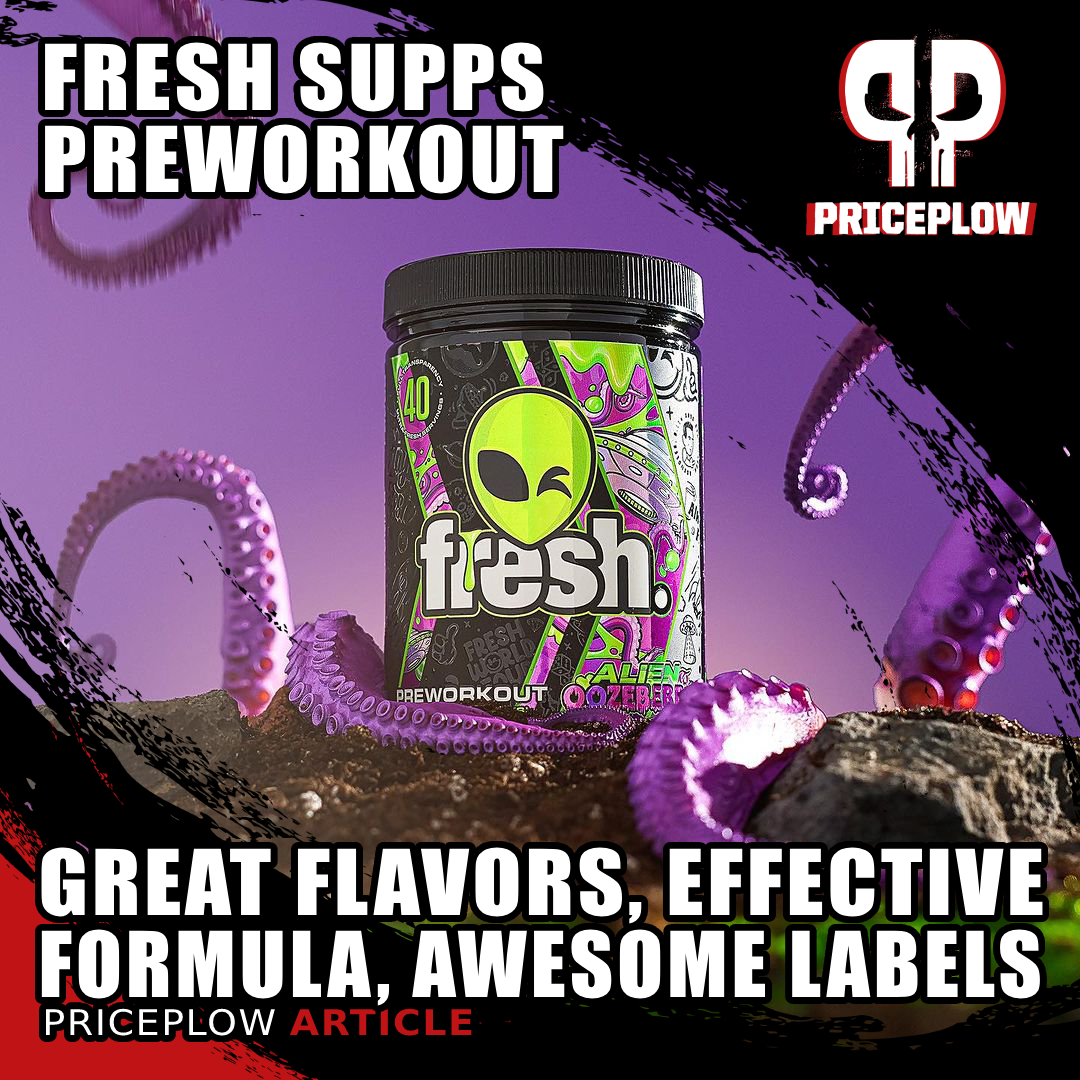
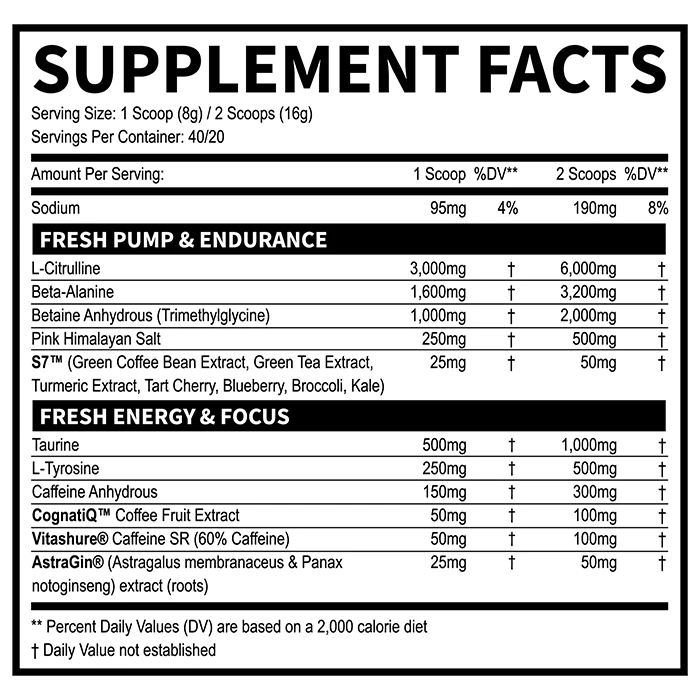
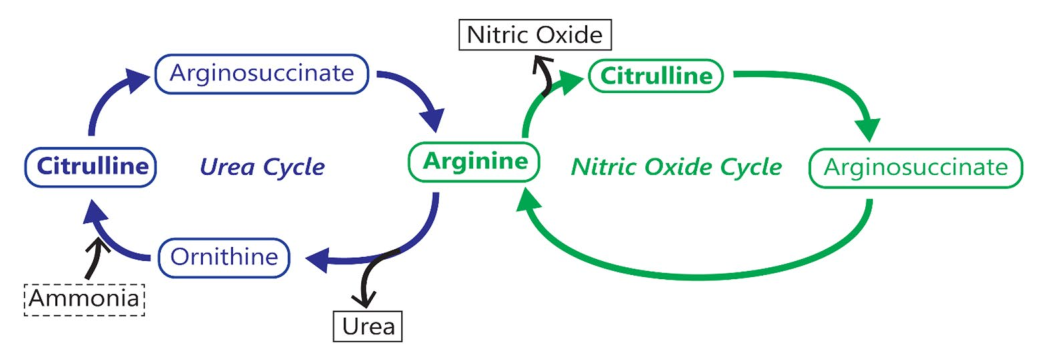
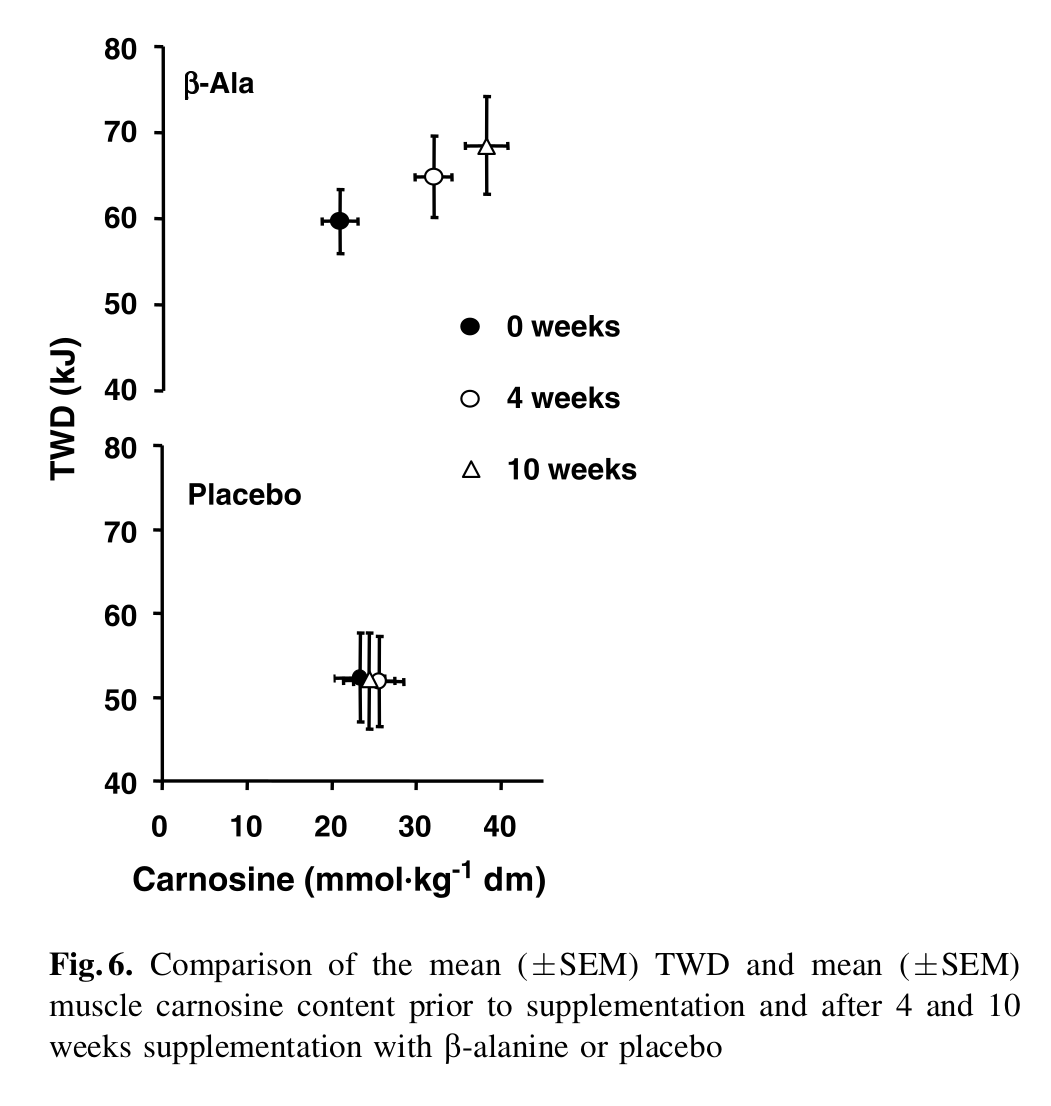

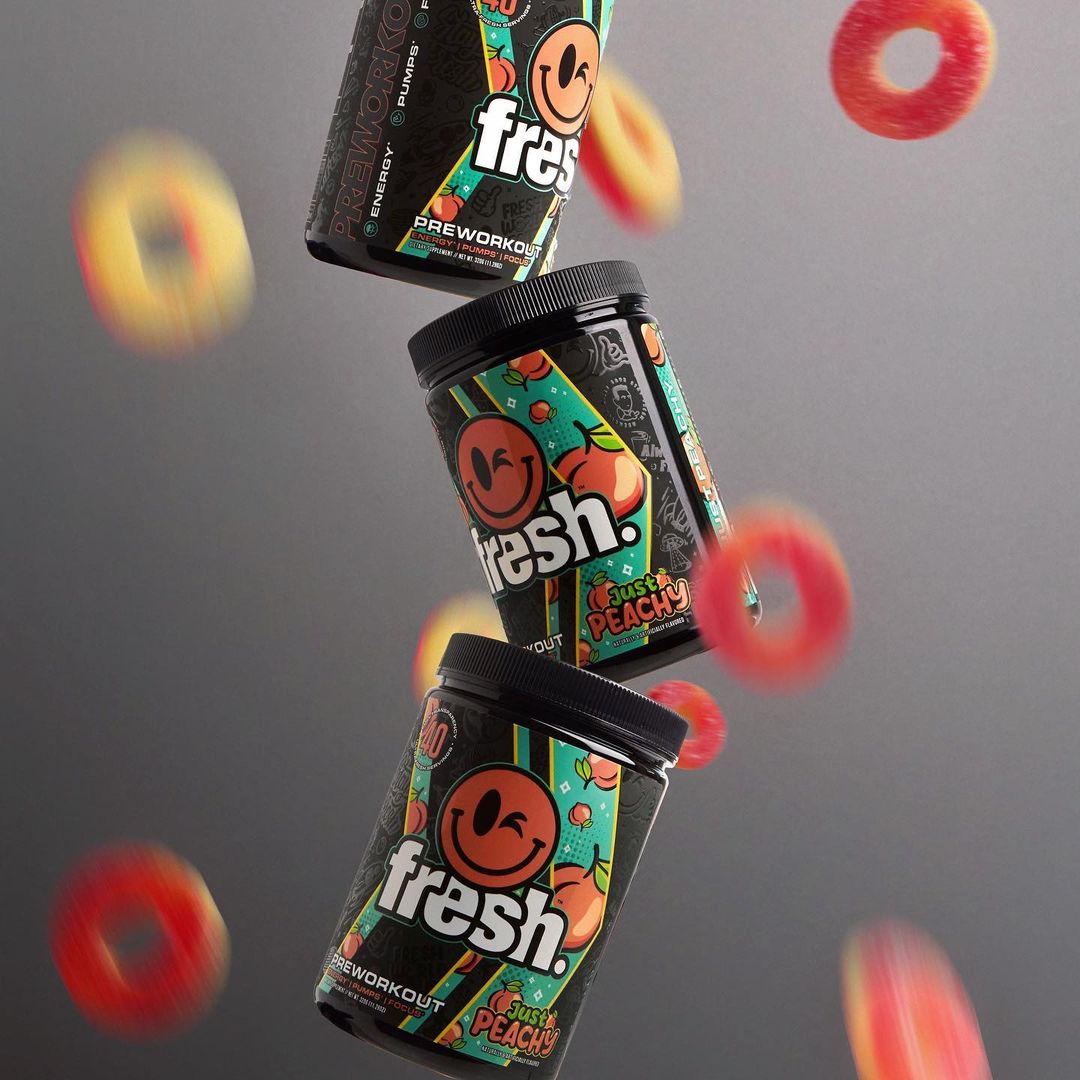
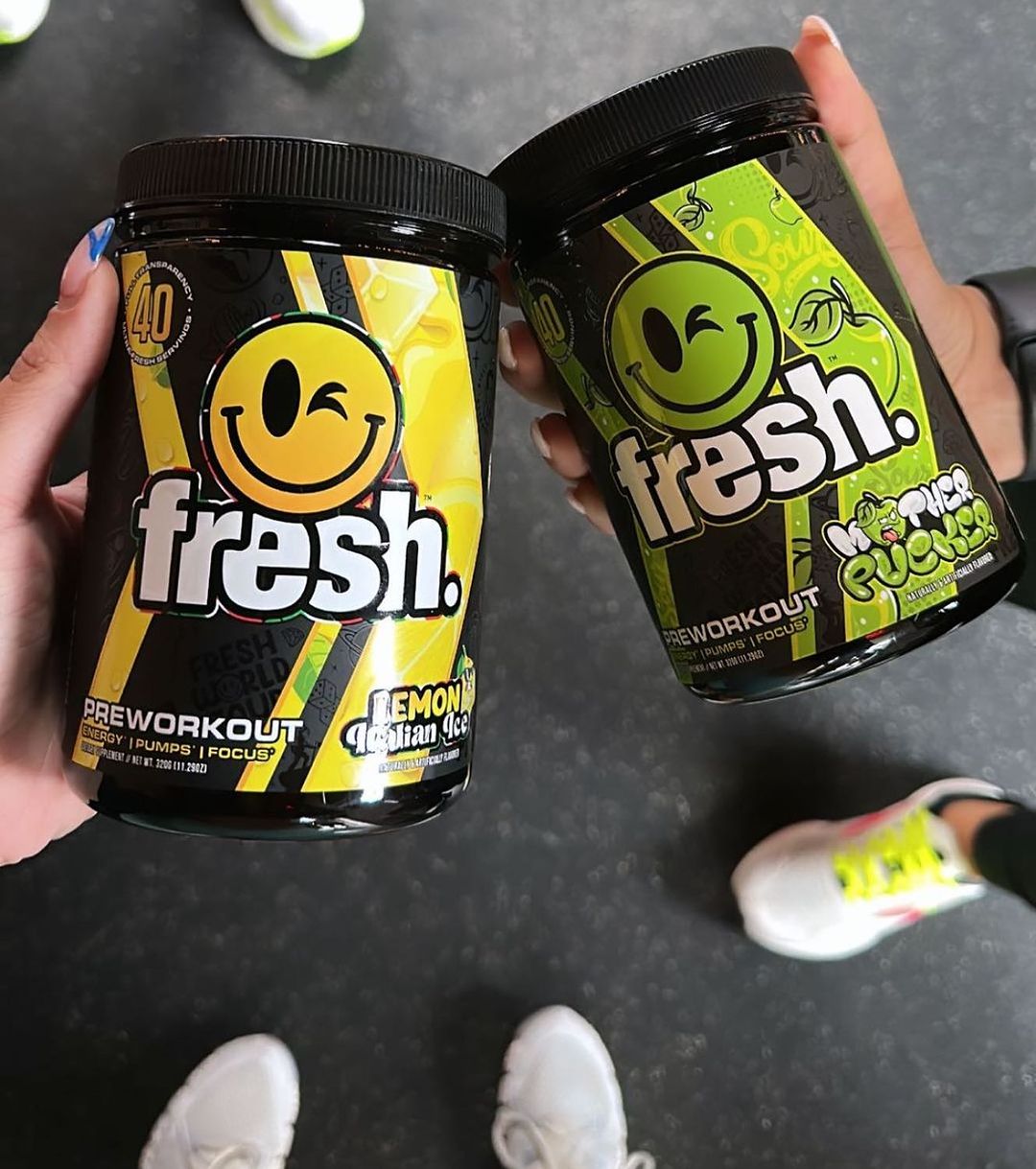
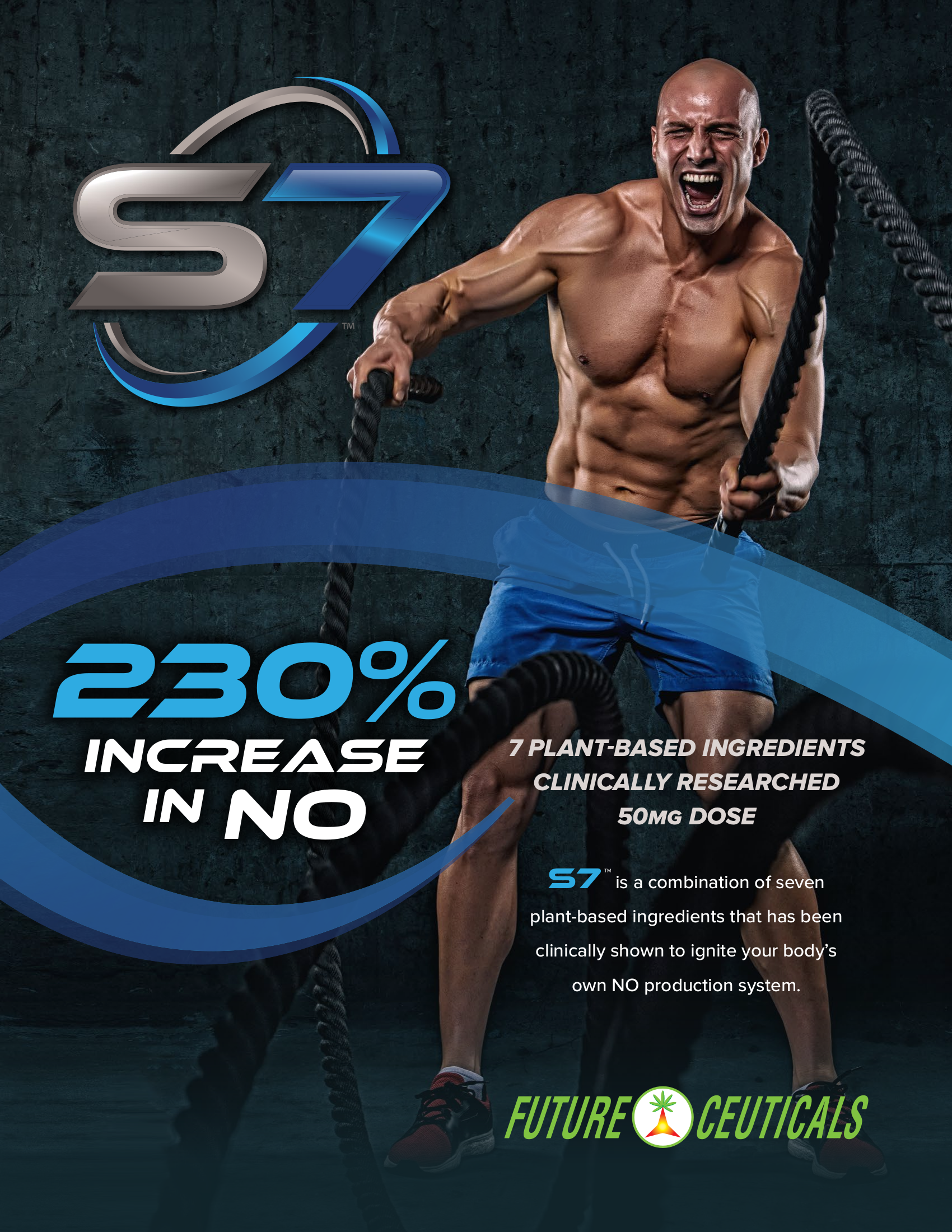
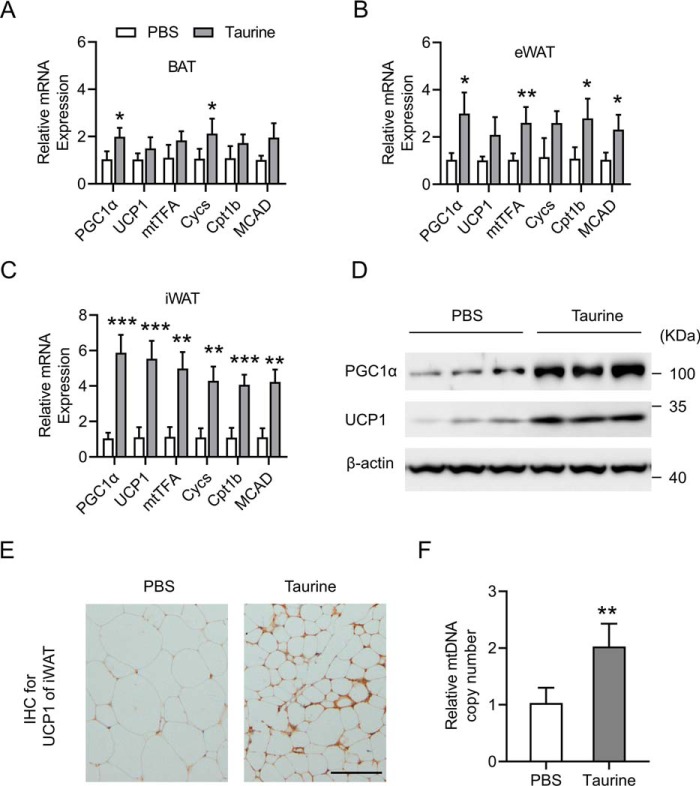
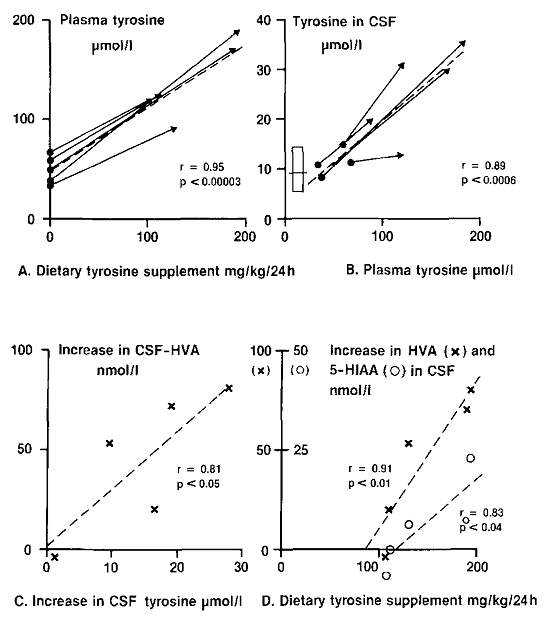
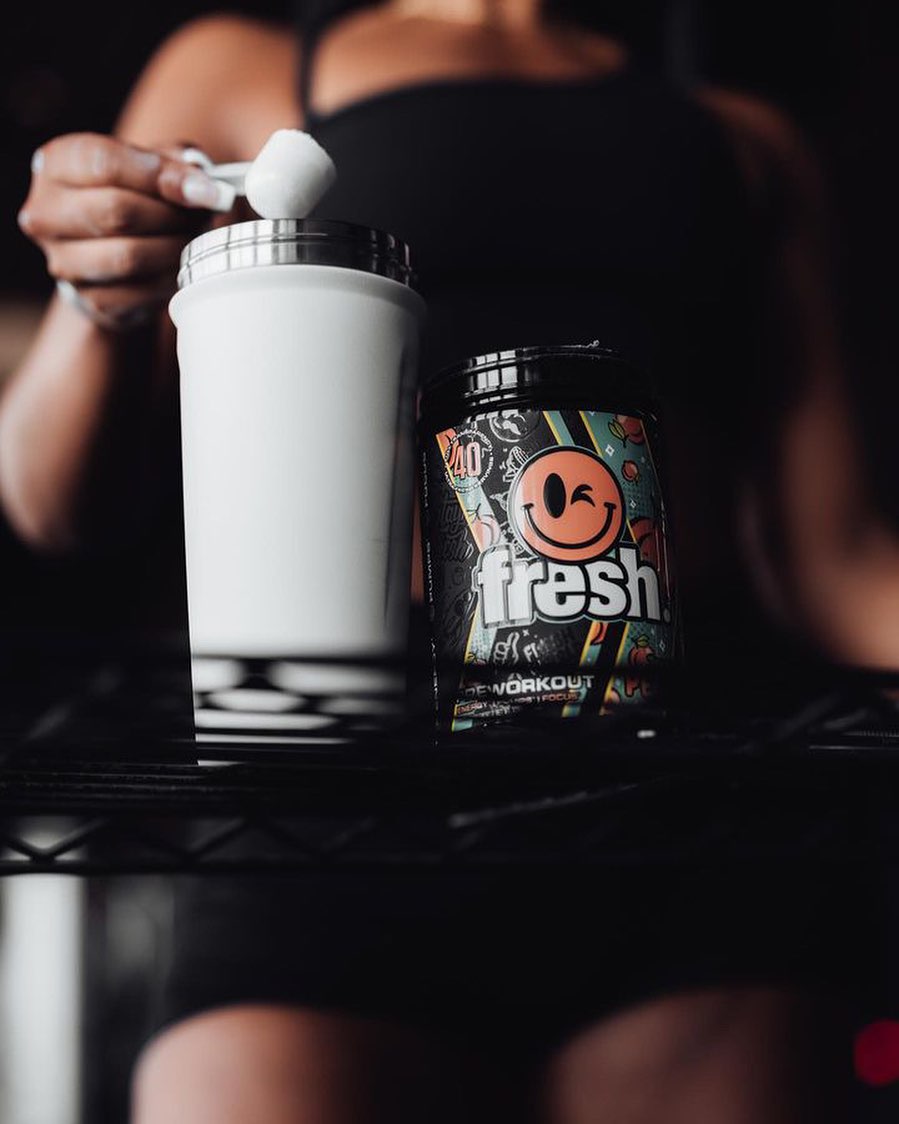

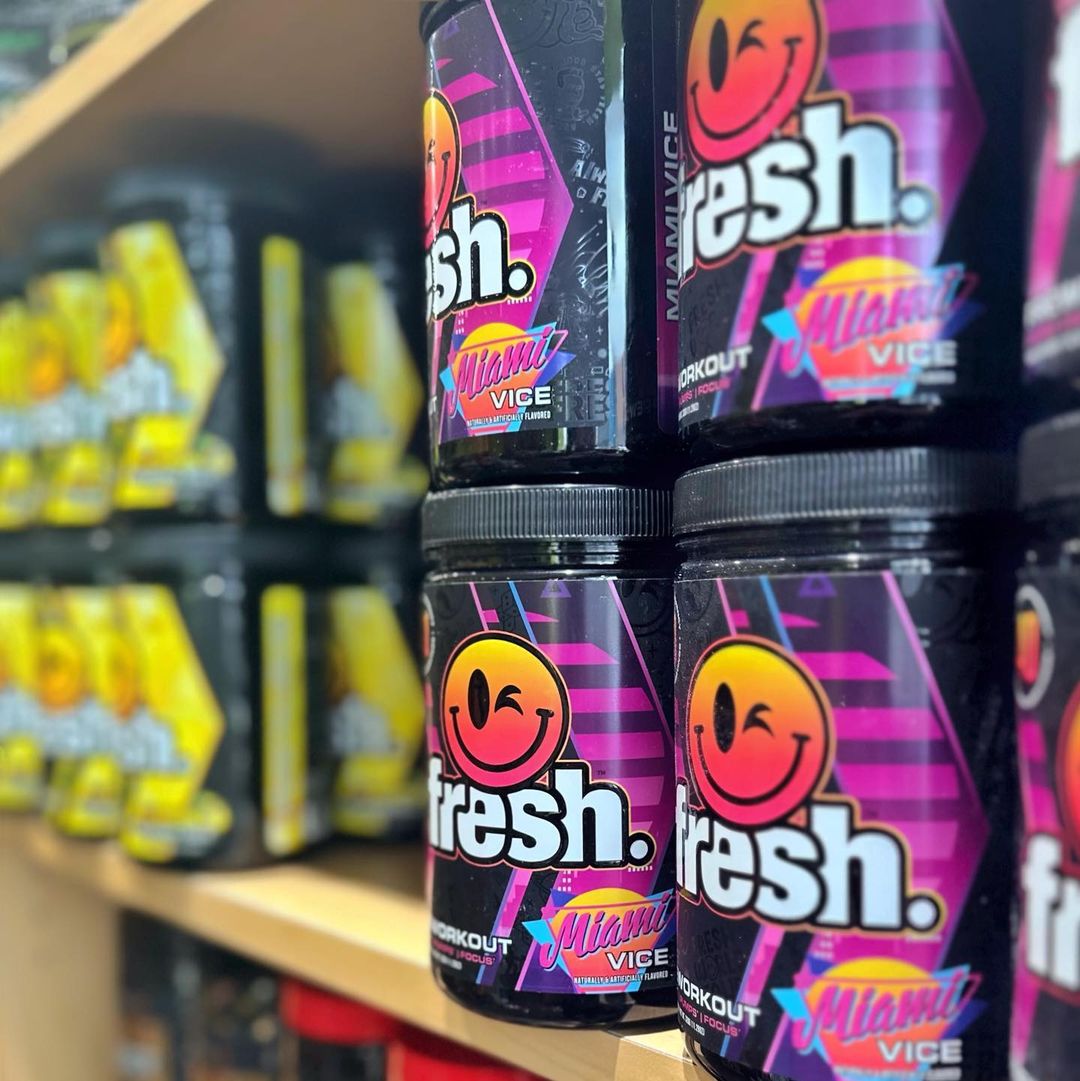
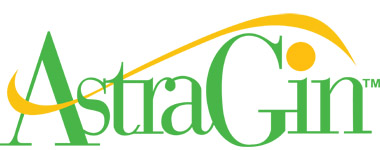
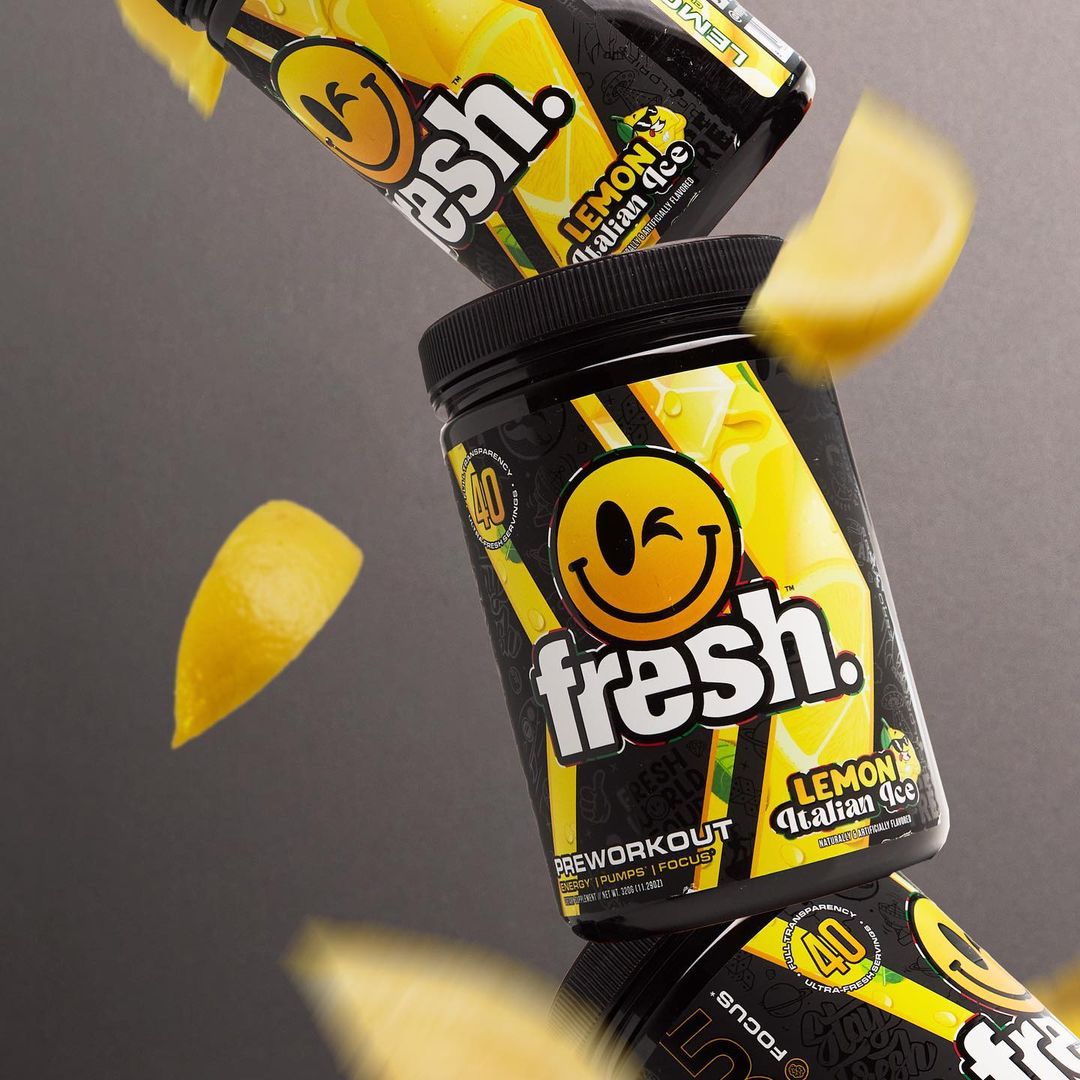


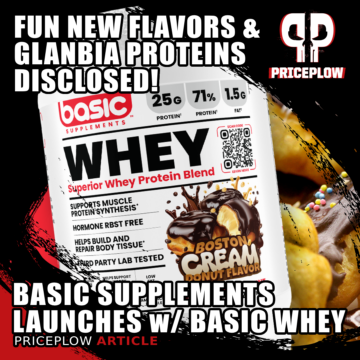
Comments and Discussion (Powered by the PricePlow Forum)